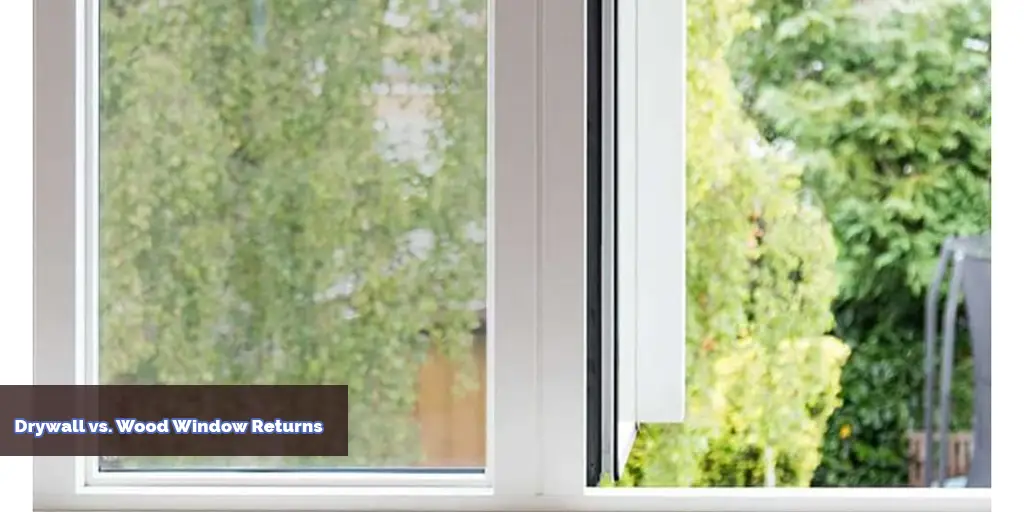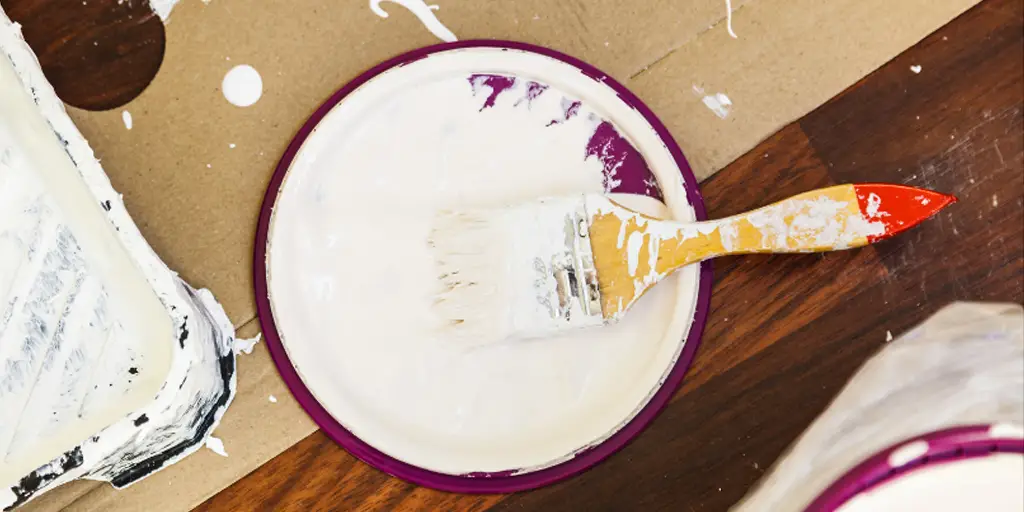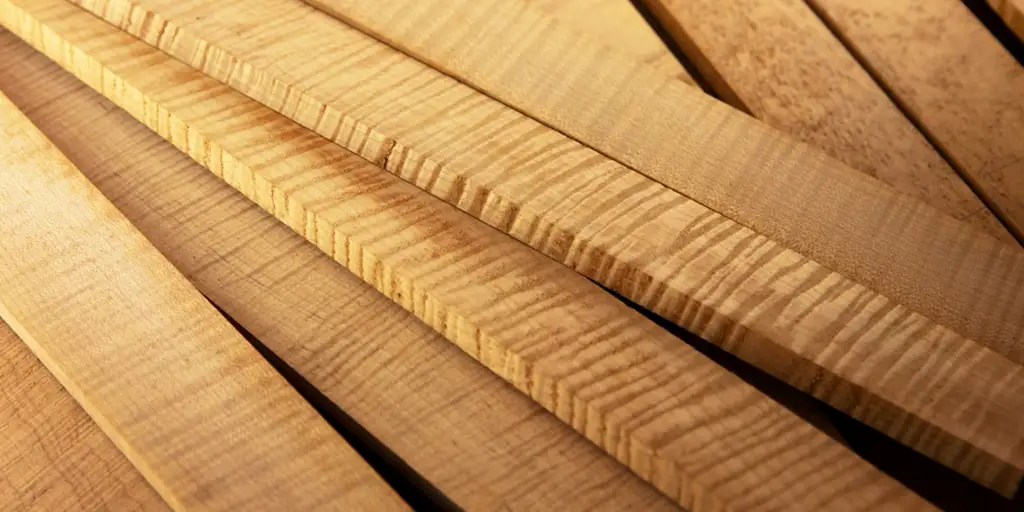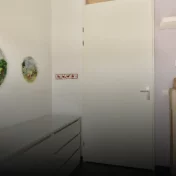Window returns, a subtle yet defining aspect of a home’s interior, can make a significant impact on the overall aesthetic and functionality.
The choice of material, specifically between drywall and wood, can influence not only the appearance but also the durability, cost, and maintenance of the window returns.

Traditionally, window returns have been an integral part of architectural designs, serving as the transition between the window frame and the adjacent wall.
It’s the recessed track where the window sits. Over the years, a variety of materials have been used to fashion these returns, each bringing its unique touch to the overall ambiance of the room.
While many materials have come and gone in popularity, two have stood the test of time: drywall and wood. Each offers distinct advantages, and understanding these can be crucial when planning a renovation or new construction.
Selecting the right material for window returns goes beyond aesthetics. It’s a decision that can:
- Affect the longevity of the window area.
- Influence maintenance routines.
- Impact the budget both in the short and long term.
- Contribute to the thermal efficiency of the room.
With so much at stake, homeowners must be equipped with all the necessary information to make the best choice tailored to their specific needs and preferences.
Drywall Window Returns

Drywall, commonly known as sheetrock, is a widely used material in modern construction. It offers a smooth, paintable surface and has become a popular choice for window returns.
Here’s a comprehensive look into the features and benefits of using drywall for your window returns:
Durability/Longevity
Drywall, when properly installed and maintained, can last for decades. Its durability stems from several factors:
- Resistance to Cracking: Unlike other materials, drywall can flex slightly, reducing the likelihood of cracks due to minor house settling.
- Moisture Resistance: Modern drywall options come with moisture-resistant features, making them less prone to mold and mildew growth.
- Pest Resistance: Certain drywall types are designed to be pest-resistant, ensuring that common household pests don’t deteriorate the material.
However, it’s essential to note that while drywall is durable, it can be susceptible to dents and punctures. Proper care and avoiding hard impacts can ensure its longevity.
Workability/Ease of Use
One of the primary reasons homeowners and contractors favor drywall is its ease of installation:
- Lightweight: Drywall panels are relatively light, making them easier to handle and install.
- Easy to Cut and Shape: With the right tools, drywall can be easily cut to fit any window return size.
- Simple Jointing: Drywall joints can be seamlessly finished using joint compound, ensuring a smooth and continuous surface.
Moreover, post-installation modifications, like adding a new electrical outlet or fixing minor damages, are straightforward with drywall.
What’s The Best Use for Drywall Returns?

Drywall window returns are ideal for:
- Modern and Minimalistic Designs: The smooth finish of drywall complements contemporary interior design themes.
- Budget-Friendly Renovations: Drywall tends to be more cost-effective than many other materials, making it a top choice for homeowners on a budget.
- Rooms with High Humidity: As mentioned, moisture-resistant drywall can be an excellent choice for bathrooms, kitchens, and laundry rooms.
Wood Trim
Wood has been a cherished material in construction and design for centuries. Its natural beauty, versatility, and timeless appeal have made it a staple in homes across the globe.

When it comes to window returns, wood trim adds warmth, character, and a touch of luxury. Here’s what you need to know about using wood as your material of choice:
Durability/Longevity
Wood, especially hardwood varieties, is renowned for its durability. Some of the standout features include:
- Natural Strength: Hardwoods like oak, maple, and cherry resist wear, making them ideal for areas of high use.
- Aging Gracefully: Over time, wood develops a patina, enhancing its aesthetic appeal.
- Resistance to Temperature Fluctuations: Wood doesn’t expand or contract as drastically as some other materials in fluctuating temperatures.
However, wood requires regular maintenance to keep it looking its best. Sealing, staining, or painting can protect it from moisture and pests.
Workability/Ease of Use
Wood’s workability is one of its standout features:
- Malleability: Wood can be carved, shaped, and molded to fit intricate designs.
- Compatibility with Tools: Wood can be easily worked with using common tools, making custom designs feasible.
- Joinery: With techniques like dovetailing and mortise-and-tenon, wood joints can be both strong and aesthetically pleasing.
However, working with hardwoods requires expertise to ensure the best results.
What’s the Best Use for Wood Trim?
Wood trim shines in the following scenarios:
- Traditional and Rustic Designs: Wood’s natural aesthetics beautifully complement classic design themes.
- Luxury Interiors: Polished and intricately carved wood trims can elevate the overall look of a room.
- Acoustic Benefits: Wood provides natural sound insulation, making it an excellent choice for rooms where acoustics are essential, like home theaters or music rooms.
Drywall vs. Wood: What to Look For

Choosing between drywall and wood for window returns often boils down to personal preference, budget, and specific use-cases. However, when making a decision, here are some critical aspects to consider:
Cost Implications
Initial Costs:
- Drywall: Generally, drywall is more cost-effective in terms of material and installation. It’s a popular choice for those looking for budget-friendly solutions without compromising on aesthetics.
- Wood: High-quality woods can be pricier. The costs also go up with intricate designs and finishes. However, wood offers a timeless appeal that many find worth the investment.
Maintenance Costs:
- Drywall: Requires minimal maintenance. Occasional repairs might be needed for dents or holes.
- Wood: Regular sealing or painting might be necessary to protect against moisture and pests. However, with proper care, wood can last for generations.
Aesthetic Differences
- Drywall: Offers a smooth, seamless finish. It’s versatile and can be painted in any color, fitting a wide range of interior designs.
- Wood: Brings warmth, texture, and a natural element to the space. The grain patterns, knots, and color variations make each piece unique.
Maintenance Requirements
- Drywall: Dusting and occasional cleaning with a damp cloth are usually sufficient. For damages, patching compounds can fix the issue.
- Wood: Requires periodic cleaning with wood-friendly products. Over time, resealing, repainting, or restaining might be necessary.
Environmental Considerations
Both drywall and wood have environmental impacts:
- Drywall: Production involves energy-intensive processes. However, many manufacturers are now using recycled materials, reducing the environmental footprint.
- Wood: Sustainable forestry practices ensure that wood remains a renewable resource. Opting for locally sourced and certified wood can minimize environmental impact.
You May Also Enjoy Reading: Raised Panel vs. Flat Panel Cabinet Doors
Is Wood Trimming More Expensive?
When considering materials for window returns, cost is often a pivotal factor for homeowners. Wood, with its luxurious appeal and natural aesthetics, often raises questions about its affordability compared to alternatives like drywall.
Initial Investment
- Material Cost: Generally, high-quality woods like oak, cherry, or mahogany will have a higher price tag than standard drywall. The cost can further increase if you opt for rare or exotic wood varieties.
- Labor Cost: Installing wood trim requires craftsmanship, especially if the design is intricate. Professional installation might be pricier than drywall installation, which is relatively straightforward.
Long-Term Value
- Durability: While the initial investment in wood might be higher, its longevity can offer value for money in the long run. With proper care, wood can last for generations, while drywall might need replacement or repairs more frequently.
- Resale Value: Homes with quality woodwork often fetch a higher market value. Prospective buyers appreciate the timeless beauty and character wood brings to a space.
Maintenance and Upkeep
- Routine Maintenance: Wood requires regular maintenance, including cleaning, sealing, or painting. Over time, these costs can add up.
- Repair Costs: While minor dents and damages in drywall can be easily and inexpensively fixed, repairing wood, especially if it has intricate designs, might be costlier.
Overall Verdict
While wood trimming can be more expensive initially, its long-term benefits, aesthetics, and potential resale value can justify the investment for many homeowners.
However, it’s essential to factor in maintenance costs and the need for potential repairs when budgeting.
Can You Combine Drywall with Wood?
Marrying the smooth finish of drywall with the rich texture of wood can result in a captivating design. Let’s delve into how these two materials can complement each other:
Complementary Designs
- Feature Walls: Use drywall for the majority of the wall space but incorporate wooden accents or panels for a striking contrast.
- Window Framing: Drywall can be used for the recessed portion of the window return, while wood serves as the framing or sill, adding depth and character.
- Built-in Shelving: Drywall alcoves can be enhanced with wooden shelves, combining functionality with aesthetics.
Benefits of Combination
- Cost-Effective: By judiciously using wood only where its impact is most felt, you can save on costs while still enjoying its aesthetic appeal.
- Versatility: This combination allows for a myriad of design possibilities, catering to both contemporary and traditional styles.
- Enhanced Durability: Strategic use of wood in high-contact areas (like sills) can increase the longevity of the design.
Installation Considerations
- Expansion and Contraction: Wood tends to expand and contract with temperature and humidity changes. It’s vital to ensure that the design accommodates this without causing damage to the drywall.
- Seamless Transition: The point where drywall meets wood should be finished meticulously to ensure a seamless and polished look.
Combining drywall with wood offers a balanced approach, allowing homeowners to enjoy the benefits of both materials.
Whether it’s the cost-saving aspects of drywall or the timeless charm of wood, a harmonious integration can achieve a stunning result.
Which Is the Right Option for You?
Choosing between drywall and wood for window returns is not a one-size-fits-all decision. Various factors come into play, and what works best for one homeowner might not be ideal for another.
Here’s a guide to help you make an informed choice:
Consider Your Aesthetic Preferences
- Modern and Sleek: If you’re drawn to minimalist and contemporary designs, the smooth and seamless finish of drywall might resonate with your style.
- Classic and Warm: For those who appreciate the timeless beauty of natural materials, the texture and character of wood can be unbeatable.
Evaluate Your Budget
- Upfront Costs: As previously discussed, drywall typically offers a more cost-effective solution in terms of both material and installation.
- Long-Term Value: While wood might require a more substantial initial investment, its longevity and potential to increase property value can offer long-term benefits.
Think About Maintenance
- Low Maintenance: If you prefer a set-it-and-forget-it approach, drywall might be more up your alley. It requires minimal upkeep and is relatively easy to repair.
- Regular Care: Wood, while stunning, requires periodic maintenance to retain its beauty. Consider whether you’re willing to invest the time and effort.
Environmental Concerns
- Sustainability: If environmental impact is a concern, opt for sustainably sourced wood or drywall made from recycled materials.
- Indoor Air Quality: Ensure that the materials and finishes you choose do not emit harmful VOCs (Volatile Organic Compounds) that can affect indoor air quality.
Future Modifications
- Flexibility: Drywall offers more flexibility for future modifications, such as adding electrical outlets or making minor layout changes.
- Preservation: If you’re looking for a long-lasting design that you won’t want to change frequently, the durability and timeless appeal of wood might be more suitable.
In essence, the decision between drywall and wood hinges on individual preferences, budget, and long-term plans for the space.
It’s essential to weigh the pros and cons of each material against your specific criteria to arrive at the best choice for your home.
Conclusion
The debate between drywall and wood for window returns is as much about personal preference as it is about practicality.
Both materials offer distinct advantages, with drywall being lauded for its cost-effectiveness and smooth finish, and wood revered for its timeless beauty and warmth.
Your choice should be a reflection of your design aspirations, budget considerations, and long-term plans for the space. While drywall offers modernity and ease of modification, wood brings character and a touch of luxury.
In an era where customization is key, and homeowners are keen on infusing their personalities into their living spaces, there’s no right or wrong answer.
Whether you opt for the seamless elegance of drywall or the classic charm of wood, the most crucial aspect is that the material aligns with your vision for your home.
In the end, window returns, though a small component of a room, can significantly influence its overall ambiance. So, take your time, weigh the pros and cons, and make a choice that you’ll be happy with for years to come.



